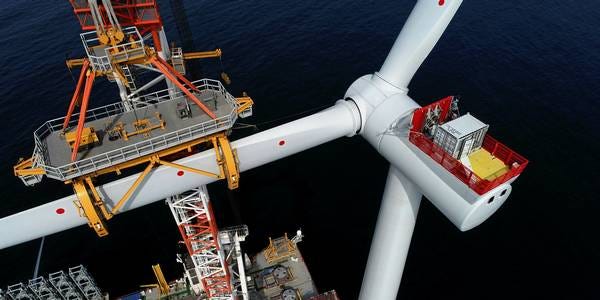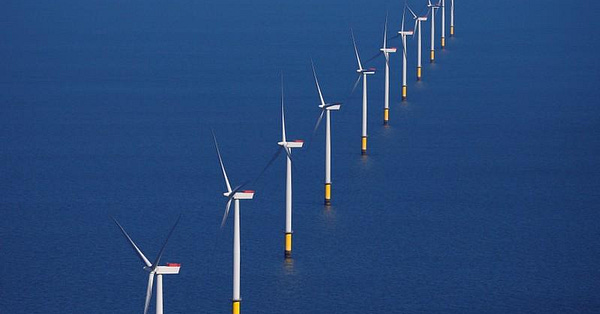Ørsted Lowers Production Targets and Return Expectations from Offshore Wind Farms
Turbine utilization may have been overestimated by not taking into account "blockage and wake effects"
Ørsted shares declined after the Danish offshore wind developer warned that its internal rates of return (IRRs) may have been overestimated. Ørsted may not have fully accounted for “blockage and wake effects” which affect wind farms built offshore. Offshore winds tend to slow when approaching turbines: this is known as “blockage.” Also, offshore winds decelerate while passing through a group of turbines (i.e., wind farms) that are built adjacent to each other: this is known as a “wake effect.” These factors ultimately reduce the utilization rate of turbines (aka “load factor”): that is, the percent of time the blades rotate and generate power. Less utilization means less power produced; less production means lower revenue.


Ørsted believes the phenomena are not limited to its wind farms but impact the entire industry. The resulting, reduced output of electricity lowers the “unlevered lifecycle IRRs” of the company’s offshore wind farms from 8.0% (7.5-8.5%) to 7.5% (7.0-8.0%). Also, the lifetime load factor (“capacity factor”) for Ørsted’s 10 European projects have been cut to 48% from a range of 48-50%.


Nonetheless, Ørsted’s CEO Henrik Poulsen believes that it's a “relatively small adjustment.” Poulsen thinks the finding will not affect Ørsted's long-term production targets and its goal of attaining the average return on capital employed of 10% from 2019 to 2025. Ørsted CFO Marianne Wiinholt was optimistic: “This is not a a major setback for the industry at all. The industry will still grow. We are [still] more competitive than gas or coal.”
But a decline in capacity factor of 2% per turbine could be a pretty big deal for offshore facilities. Wind farms enter into power purchase agreements (PPAs) for 15-20 years and may operate for 20-25 years without being repowered. If you assume that a large offshore wind turbine like GE’s Haliade-X can be utilized 50% of the time operating in the North Sea or off Jersey Shore in the Atlantic Ocean, the amount is about 2,104 MWh (2% x 12-MW x 365.25 days x 24 hours). At about $84.23/MWh, which was the price cap in Massachusetts’s most recent offshore wind tender, that translates to $180,000 per turbine ($84.23/MWh x 2,104 MWh) in lost revenue. For a wind park the size of New Jersey’s 1.1-GW Ocean Wind Project, which would feature 91 GE Haliade-X turbines, the amount of the power production lost is 192,000 MWh; the revenue loss is ~$16.2 million per year or $363 million over the project’s lifecycle.


That’s a lot of electricity that never made it to the grid. As the build-out of offshore facilities continues and wind farms are built adjacent to each other, these "blockage and wake effects" could multiply. Power production could be hampered as offshore wind farms are built in close proximity to each other.
In the end, it’s a “reality check” and the bottom line will be impacted. Ørsted announced that job cuts may eventually be necessary in fiscal years 2020 through 2022.


